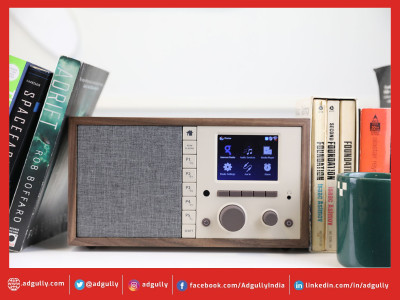Radio Ga-Ga again: The reinvention, resurgence & relevance of radio in digital era
“Video killed the radio star
Pictures came and broke your heart”
This 1979 song by the British new-wave band Buggles wistfully captured how the arrival of technology, especially the visual media, heralded the decline of radio as a medium. Since then, naysayers have been sounding the death-knell for radio. But, this simple medium thrived and continues to thrive to this day. In fact, in countries like India, radio is a kind of a leveller – its content palatable and appealing to everyone, from the hardscrabble neighborhoods of hinterlands to the middle-class suburbs.
As per the latest figures available, there are more than 369 operational private radio stations spread over more than 101 cities and towns in India, and the industry is expected to grow in the coming years.
The Indian radio industry, however, has been impacted by the rise of digital media and streaming services. One of the biggest impacts of digital media and streaming services on the radio industry has been a shift in advertising revenues. Advertisers are now able to target specific audiences more effectively through digital platforms, which has led to a decline in radio advertising revenues. Additionally, many radio stations are now available online, and listeners can tune in to their favourite stations from anywhere in the world, further increasing competition.
Digital offerings
Nisha Narayanan, Director & COO, RED FM & Magic FM, feels that the rise of digital and internet audio apps has brought both advantages and disadvantages to the industry.
“On the positive side, audio content has become increasingly popular among wider audiences, extending beyond traditional FM or radio markets. On the other hand, the growing dominance of digital spending has made it more challenging for traditional media to secure their share of the advertising pie. Nevertheless, we are witnessing an emergence of new and exciting formats such as podcasting, Indie music, and audio storytelling, which are rapidly gaining popularity. In addition, radio still remains a free-to-air and easily accessible medium, offering on-the-go entertainment options that are highly attractive to listeners. By embracing these trends, the industry can continue to thrive and adapt to changing consumer preferences, while creating new opportunities for growth and innovation,” she points out.
What she stated is a fact. The Indian radio industry continues to thrive, with many stations adapting to the changing landscape by embracing digital platforms and offering online streaming options. Some stations have even started producing exclusive content for their digital audiences, which has helped them to stay relevant in the face of increased competition from digital media and streaming services.
“‘Co-exist’ is the word in my opinion, radio has its own merits and so does digital media and streaming services,” remarks Rahul Namjoshi, CEO, MY FM. According to him, radio is witnessing growth after the Covid impact and will continue to grow. He is optimistic that 2023-24 will be a redefining year for radio.
The year 2022 focused on economic recovery after the two years of lull caused by the pandemic, says Nilesh Bagaria, General Manager, Madison Media Ultra. “The radio industry witnessed a positive sentiment among consumers as well as advertisers to spend, especially during the festive season. This led to the growth of radio advertising in 2022 and we expect this phenomenon to continue gaining momentum in 2023 as well. Earlier the core focus was providing radio-specific solutions, but with the advent of our ‘radio digitalization’ strategy, most stations started providing holistic solutions that include radio plus digital offerings,” he explains.
Challenges of measurement
Radio advertising in India faces some challenges, such as the limited availability of radio advertising data, and the difficulty in measuring the effectiveness of radio advertising campaigns.
Measuring ROI in the era of performance marketing is a significant challenge, not only for radio but for most traditional media, agrees Nisha Narayanan.
Despite this, she adds, radio’s effectiveness as a hyperlocal medium with the maximum number of advertisers is unparalleled, offering a unique blend with all types of content that provides incremental reach at a substantially lower total investment.
“This ‘Bacardi effect’ has made radio a popular choice for marketers, especially in a cost-sensitive market. However, due to lower rates and a limited understanding of the multiple solutions approach that radio can provide, we may not receive equal attention from trade partners. Additionally, the high cost of government fees, licences, and music royalties makes it difficult to maintain profitable margins. Nevertheless, the pandemic has accelerated the pace of change, and multiple data providers and platforms are now offering measurement data, providing new opportunities to measure ROI more accurately. As we move forward, we must continue to adapt and evolve our strategies to remain relevant in the face of rapidly changing consumer preferences and market dynamics,” she adds.
Rohit Mehrotra notes that the issues are many, but also adds that’s the case with each category that exists. He agrees that measurement/ currency for radio is critical and that the industry – comprising both broadcasters and media agencies – should come together to develop a currency.
According to Nilesh Bagaria, the biggest challenge for radio medium is to get space in the consideration set of brands and advertisers. He adds, “I don’t think the lack of data is an issue. Even within RAM data of four metros, when it was available, we couldn’t witness any significant trend in terms of ranking of radio stations. Radio medium has always been a frequency builder, and hence, most brands anyway consider two-three top players in their media plan and bombard spots with high frequency.”
Diversity in programming
The Indian radio industry is dominated by a few major players. As such there is a need for more diversity in programming to cater to the diverse interests and preferences of the Indian audience. Also, there should be more investment in talent and content development to produce high-quality programming.
Industry players admit that the radio industry should focus on content diversity to stay relevant and attract a wider audience. India is a diverse country with many different languages, cultures, and regions, and radio stations have the opportunity to cater to these diverse audiences by offering a wide range of content. Expanding content diversity can help radio stations to reach new audiences and build a loyal listener base. For example, a station that offers programming in multiple languages can attract listeners who speak those languages and may not be interested in content that is only available in Hindi or English.
Diversity in content offerings can help radio stations to differentiate themselves from their competitors. By offering unique programming that is not available on other stations, radio stations can attract listeners who are looking for something new and different.
It can also help radio stations promote social inclusion and diversity. By offering programming that reflects the diversity of India’s population, radio stations can promote a more inclusive society and help to bridge cultural divides.
Nilesh Bagaria agrees that there is a massive scope of improvement in programming across most radio stations. Currently, he adds, every station focuses only on Jock-Talks, which consumes more than 50% of the programming time and hence is not much exciting for the listeners.
“Radio is a medium which works beautifully when it comes to engaging with listeners, and hence today radio stations should focus on engagement-led activations and programming,” he says.
Nisha Narayanan also agrees that there should be diversity in radio programming. She adds, “It is evident that the radio industry requires a diverse range of programming to avoid monotony in the airwaves. However, high licence-fees often hinder broadcasters from exploring alternative options, forcing them to play only the most commercially viable content.”
“Nonetheless, we are making substantial investments in talent acquisition and development, working with top-tier experts in the field, and employing comprehensive training strategies to ensure we deliver the highest quality content within the current limitations. Our primary objective is to elevate industry standards and provide listeners with engaging and informative programming that caters to a broad range of interests,” she adds.
Each category has a few dominant players and only the top three players in any category in media are profitable, asserts Rohit Mehrotra. “MY FM is a hyper-local product, and hence we claim ourselves to be India’s Local FM Network; what we play in Jaipur, the same content isn’t played in Kota, and so on and so forth for all the other markets. Our programming and content changes as per the market we operate in. We are a talent-led industry, while there is a challenge in finding the right talent but we don’t shy away from picking and paying the right talent,” he explains.
Licensing process
Another issue is the licensing process for private FM radio stations in India, which is complex and time-consuming, which in turn limits the entry of new players into the market. Additionally, there are restrictions on the ownership of multiple stations in the same city, which limits the growth potential of existing players.
Industry players feel that these restrictions should be relaxed for more players to enter the industry.
Nisha Narayanan believes that it is essential to consider relaxing the current licensing process for radio stations. “There should be no restrictions on station ownership, allowing any successful bidder to operate the station. This will facilitate increased competition and diversification of the radio industry, with more players entering the market. By implementing these changes, radio can evolve into a dynamic medium that caters to a broader audience, representing a multitude of voices and perspectives,” she says.
The High Floor Price for new radio stations is the biggest restriction for new players/ existing players to enter or expand, agrees Rohit Mehrotra.
Adding further, he states, “The lukewarm response in the last two auctions was due to this fact only. We have been insisting that the market is capable of discovering the right price and the government should start the auction at a lower price. In Phase 3 we have seen some cities going 8-9 times of the reserve price and some cities not even begging the reserve price. Yes, I agree that restrictions on ownership, etc. should be removed to ensure more players and serious players enter the various markets.”
Today, almost all towns and cities in India have minimum four to six private radio stations and AIR & VB are additional options for the listeners, points out Nilesh Bagaria. With the average time spent on radio is not more than 20 minutes, he believes that, in the current scenario, there is no need for more radio stations.
“What is needed is that all radio stations offer unique content and programming strategy to keep listeners engaged. This would help radio stations to get more listeners and advertisers on board and hence scope of expansion,” he concludes.









Share
Facebook
YouTube
Tweet
Twitter
LinkedIn